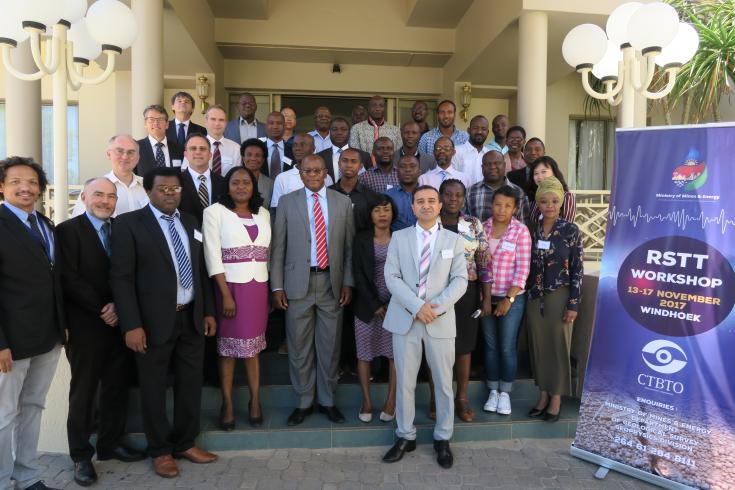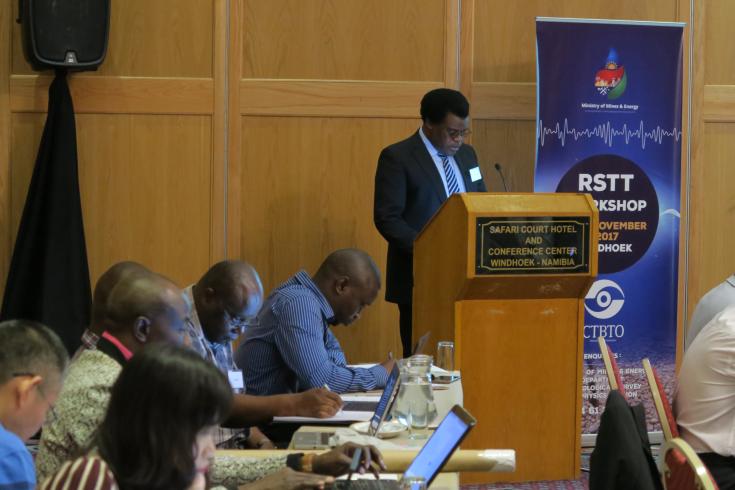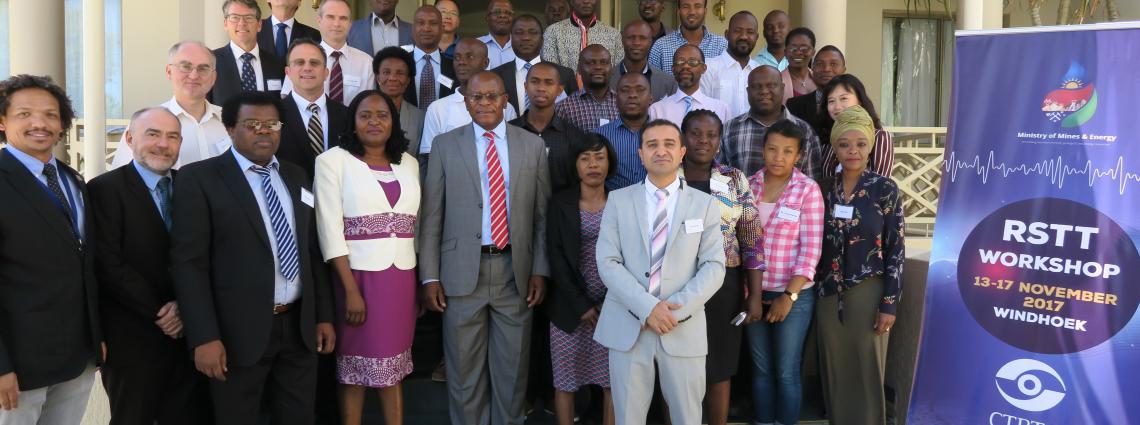Namibia Capacity-Building Workshop
13-17 November 2017, Namibia
Co-organized by the National Data Centre (NDC) in Namibia from 13-17 November, the CTBTO held a technical NDC capacity building workshop on regional seismic travel time (RSTT). RSTT is a method to compute a regional seismic velocity model and the tools to use this model for more accurate seismic analysis. Aimed at African NDCs, the workshop focussed on using the RSTT method to improve analysis of seismic events for the International Monitoring System (IMS). The RSTT workshop in Windhoek, Namibia also covered data sharing and integration training. It concludes a series of similar events across Africa which included workshops in Egypt, and in Cape Town, South Africa. Prior to the Africa process, the CTBTO initiated RSTT training in the Latin American and Caribbean states, which ended in September 2015.

The 2017 NDC capacity building and RSTT workshop in Namibia is one of the most friendly, thought provoking, interesting and easy to follow workshops in recent times. The benefits are simply enormous, overwhelmingly robust and practical. I have no doubt that the wealth of experience, useful knowledge and skills gained therein would linger beyond the five-day rigorous and exciting workshop.
The broad objectives of the workshop included strengthening knowledge on the CTBT and the work of the CTBTO, building-up the national and regional capacities in implementing the Treaty and participating in the verification regime, as well as to promote the civil and scientific applications of verification technologies, in particular to promote the importance of Ground-Truth (GT) event locations in defining regional seismic velocity structures and models, as well as to share data and to develop the RSTT model in Africa through the acquisition of GT seismic locations.
I understood the importance of sharing seismic data within my country and with my neighbours to increase the accuracy of our seismic bulletins.
Additional objectives for the Data Sharing and Integration Training included understanding how RSTT can help regional networks achieve more precise event locations, to learn how RSTT can be interfaced with current locators used in daily earthquake location procedures, and to stimulate regional cooperation in data exchange through the NDCs and regional network operators.
I appreciated the opportunity to learn how to use the various software to improve our earthquake location capabilities and especially how to improve and make use of the RSTT model. The encouragement given during the workshop to collaborate within the region was also appreciated. This was a very worthwhile workshop.
Along with presentations and theoretical discussions, participants were actively engaged in hands-on exercises on RSTT data sets, including the measurement of regional arrival times, location of events using regional data, combining regional and local data, combining regional and teleseismic data, testing location accuracy, evaluation of residuals, and the comparison with ground truth and other reference events.

The NDC workshop organized by the CTBTO is very interesting and helpful in my field. It helped the participants to connect with each other and share their problems in terms of sharing data. The training is very important for young researchers and I would like to advise some trainings in the future for young seismologists especially.
20 Nov 2017
